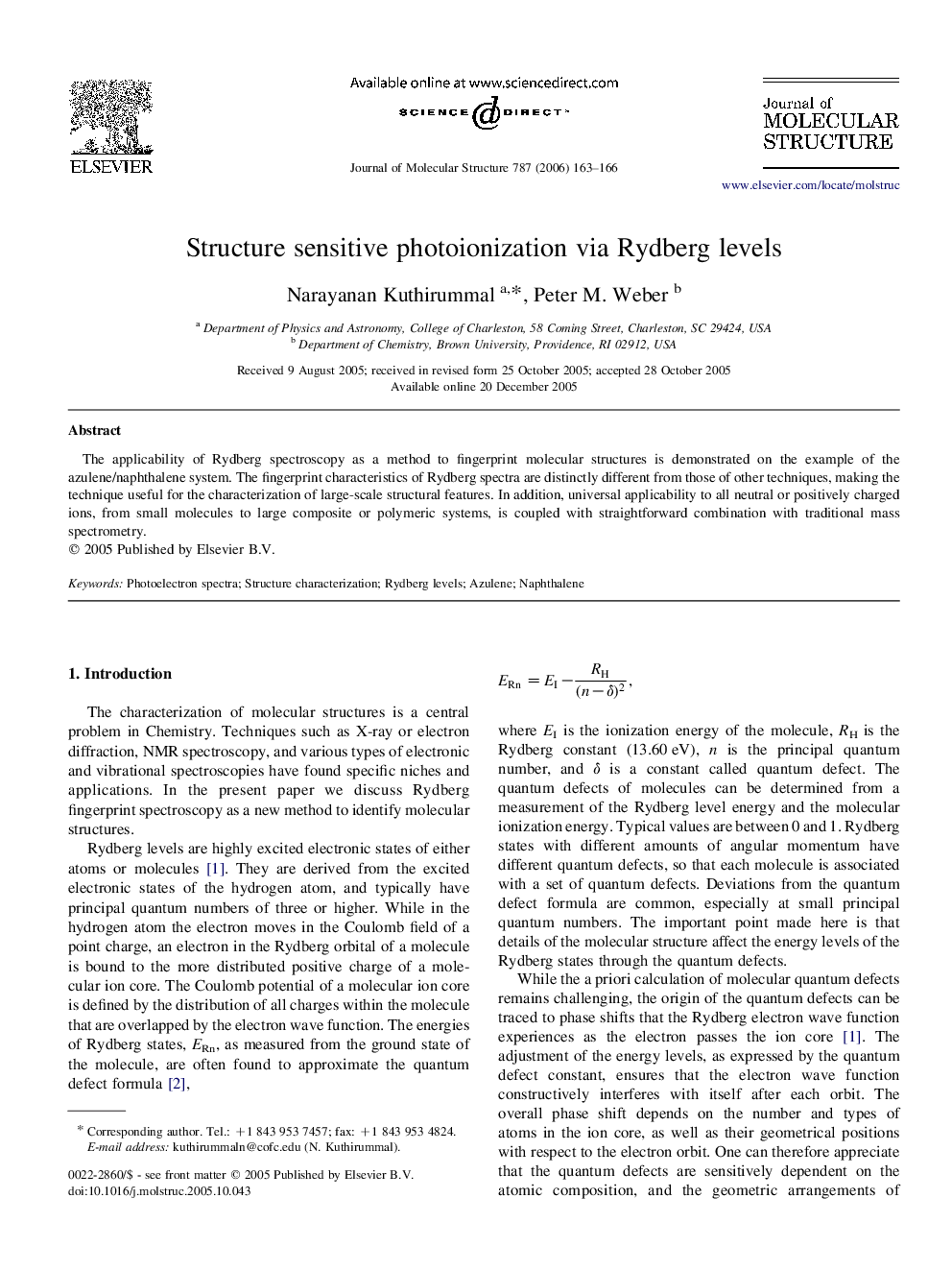| Article ID | Journal | Published Year | Pages | File Type |
|---|---|---|---|---|
| 1407967 | Journal of Molecular Structure | 2006 | 4 Pages |
Abstract
The applicability of Rydberg spectroscopy as a method to fingerprint molecular structures is demonstrated on the example of the azulene/naphthalene system. The fingerprint characteristics of Rydberg spectra are distinctly different from those of other techniques, making the technique useful for the characterization of large-scale structural features. In addition, universal applicability to all neutral or positively charged ions, from small molecules to large composite or polymeric systems, is coupled with straightforward combination with traditional mass spectrometry.
Related Topics
Physical Sciences and Engineering
Chemistry
Organic Chemistry
Authors
Narayanan Kuthirummal, Peter M. Weber,
